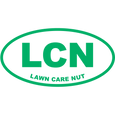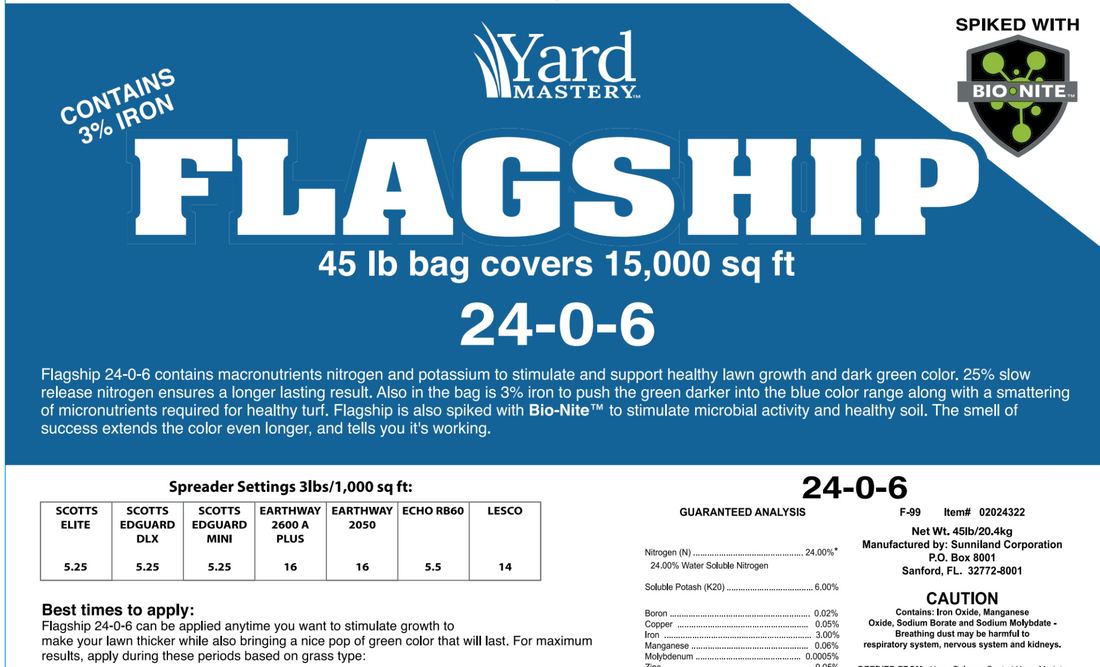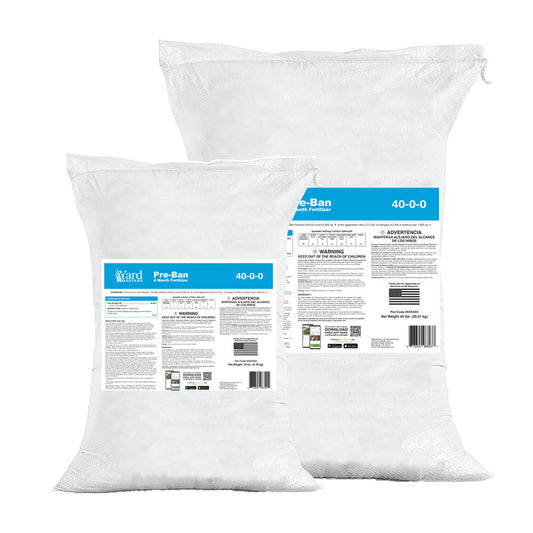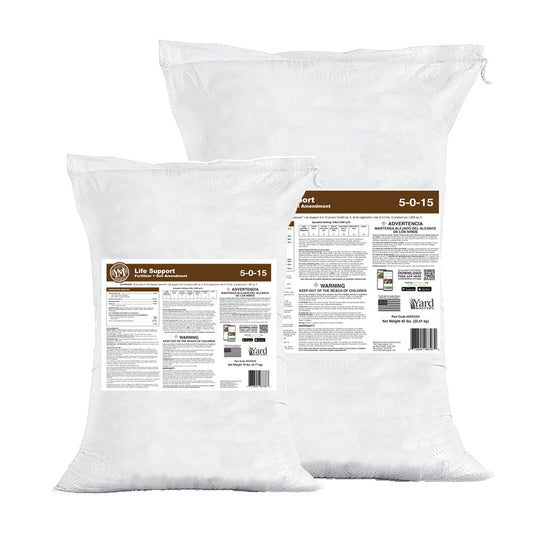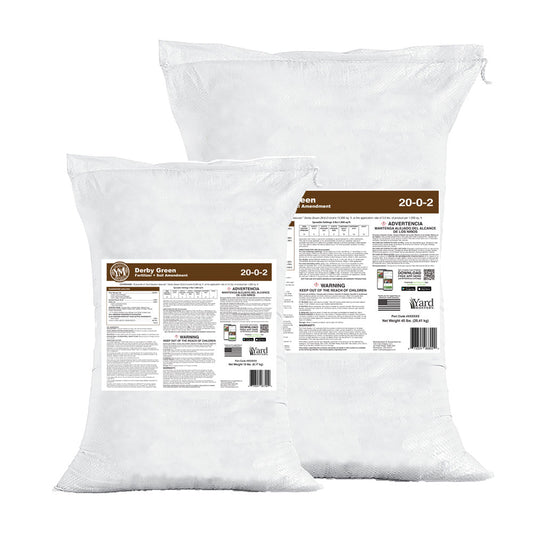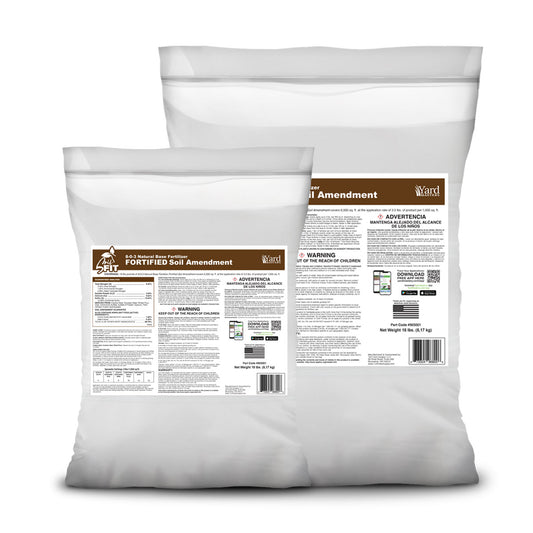Today I am picking up with the series I started on DIY lawn care and understanding how much it costs. In the first post I talked about granular fertilizer cost comparisons and showed you that if you just look for the lowest price, you actually could end up paying more.

Today we are going to take a different approach and look at what’s actually in the bag and determine how that would impact the cost of an application.
In that first post I showed you a Milorganite alternative (a biosolid) called ProCare. This is Lowe’s answer to the MILO shortage. The analysis for the ProCare fertilizer is 4-3-0.
What Do The Numbers On The Bag Stand For?
When you see the 3 numbers on a bag of fertilizer, that is called its “analysis.” Those numbers appear on all lawn fertilizers and they indicate the amount of N-P-K (nitrogen, phosphorus, potassium) inside the bag. N-P-K are macronutrients.
For this fertilizer, 4-3-0 analysis means:
Nitrogen - 4%
Phosphorous - 3%
Potassium - 0%
When you see 3 numbers on a bag of fertilizer, those 3 numbers always represent N-P-K.

36 x .04 = 1.44
We also know that 3% of the bag is phosphorous or 1.08 lbs.
36 x .03 = 1.08
The rest of the bag is other organic matter or “filler” materials. In the case of this particular fertilizer, known as a “biosolid,” the prills in the bag are what is left after microbes consume sewage and then get baked at high temps.
Those baked microbes have an analysis of 4-3-0 plus some iron and calcium. I will talk more about the sources of the nutrients in another post coming up. (organic/natural vs synthetic). For now, just know that this ProCare fertilizer is a natural fertilizer with an analysis of 4-3-0 and those numbers indicate percentages.
In the world of DIY lawn care, we have a standard we use whereby we talk about application amounts in terms of 1,000 sq ft increments. This is the standard unit of measurement that almost all lawn care products will use. That’s why you will see language such as “covers 15,000 sq ft” or “application rate 3lbs/1,000 sq ft” on bags of fertilizer.

In relation, go back up and look at the ProCare label where you see it covers 2,500 sq ft. It would take 6 bags of ProCare to cover the same amount of lawn space as 1 bag of Flagship.
Lawn Measuring - Learning Your Land
In my yard care training course - Yard Care Bootcamp I go into this standard extensively and talk about measuring your lawn and learning your land.
I also have a video here you can view where I talk about measuring your lawn and creating a property map. Additionally, you can now measure your lawn right inside my lawn care app! Get the FREE app for Android here and Iphone here.
See how that works in understanding your budget against what you are spending?
 We use the 1,000 sq ft standard for a lot of other things too - weed killers, fungicides, even buying a lawn mower, is based on knowing the size of your lawn and how many 1,000 sq ft areas you are caring for. Unlocking this one piece of data opens up a whole new level of understanding for your entire lawn care strategy even if you don’t realize it yet.
We use the 1,000 sq ft standard for a lot of other things too - weed killers, fungicides, even buying a lawn mower, is based on knowing the size of your lawn and how many 1,000 sq ft areas you are caring for. Unlocking this one piece of data opens up a whole new level of understanding for your entire lawn care strategy even if you don’t realize it yet.It’s one thing to just go and buy a bag of fert, throw it down and then hope for the best. That’s what most DIYers do and it’s just fine - the Scotts Company has built a very large business on this model.
But if you want to know a little more info about the “why” behind things, then that is when you start applying some math to the elements inside the bag and that starts by knowing your lawn size.
Nitrogen Drives The Bus
Nitrogen is what turns the grass green and that is what people who use my strategies want: a greener lawn. In my experience, a “good shot” of nitrogen that will turn your lawn green is going to be right around .75 lbs of nitrogen per 1,000 sq ft.
You can go lighter than that, and you can go heavier and you will still be ok, but for me, and what I do, you will find that I usually recommend nitrogen shots to be ¾ lbs per 1,000 sq ft and during growth periods, I like to push ¾ lbs/N/1,000 every 4-5 weeks.
Remember above how I told you that the ProCare Natural listed has a 4-3-0 analysis which means it’s 4% nitrogen? Just to review, that means that of the 36lbs of “stuff” in that bag, 4% of it is nitrogen.
So let’s look at the recommended application rate on that product and see just how much nitrogen it’s going to give us:

That means you would spread 14.4 lbs of the fertilizer across each 1,000 sq ft area of your lawn.
Another way to get the application rate is to go back to the front of the bag and find 2 pieces of information.
Coverage
Bag Weight
These two things will be listed on the front of every bag of lawn fertilizer you buy. In the case of ProCare we see the bag covers up to 2,500 sq ft (called the bag rate) and the weight of the bag is 36lbs.
Watch this math.
36/2.5 = 14.4
See what I did there?
The bag weighs 36 lbs and it can cover 2,500 sq ft.
That means that each 1,000 sq ft area would then get 14.4 lbs of product applied to it.

Pounds on the Ground
All of this math is great but none of it matters if we are not getting enough nitrogen to show the biggest change in the color of the lawn.
You’ll remember that I typically recommend .75lbs of nitrogen per 1,000 sq ft of lawn area in my fertilizer recommendations. I recommend you give your lawn this ¾ lbs/N/1,000 abut every 4-5 weeks during growth periods. Let’s see what the ProCare is going to deliver should you choose to sling it:
Application Rate: 14.4lbs / 1,000 sq ft
Nitrogen Analysis: 4%
14.4 x .04 = .576
So basically, a little over ½ lb of nitrogen per 1,000 sq ft.
That’s ok but it certainly isn’t the ¾ lbs/N/1,000 that I would be looking for.
Let’s compare that to the 24-0-6 Flagship fertilizer that we have on Yard Mastery.
Application rate: 3lbs/1,000 sq ft
Nitrogen Analysis: 24%
3 x .24 = .72
That’s very close to that ¾ lbs/N/1,000 that I am looking for! And of course it is, it’s my fertilizer lol
But what else can we learn from this?
First off is that you would be saving a TON of money buying the Flagship fertilizer if your goal was to get down a good shot of nitrogen. Check this out:
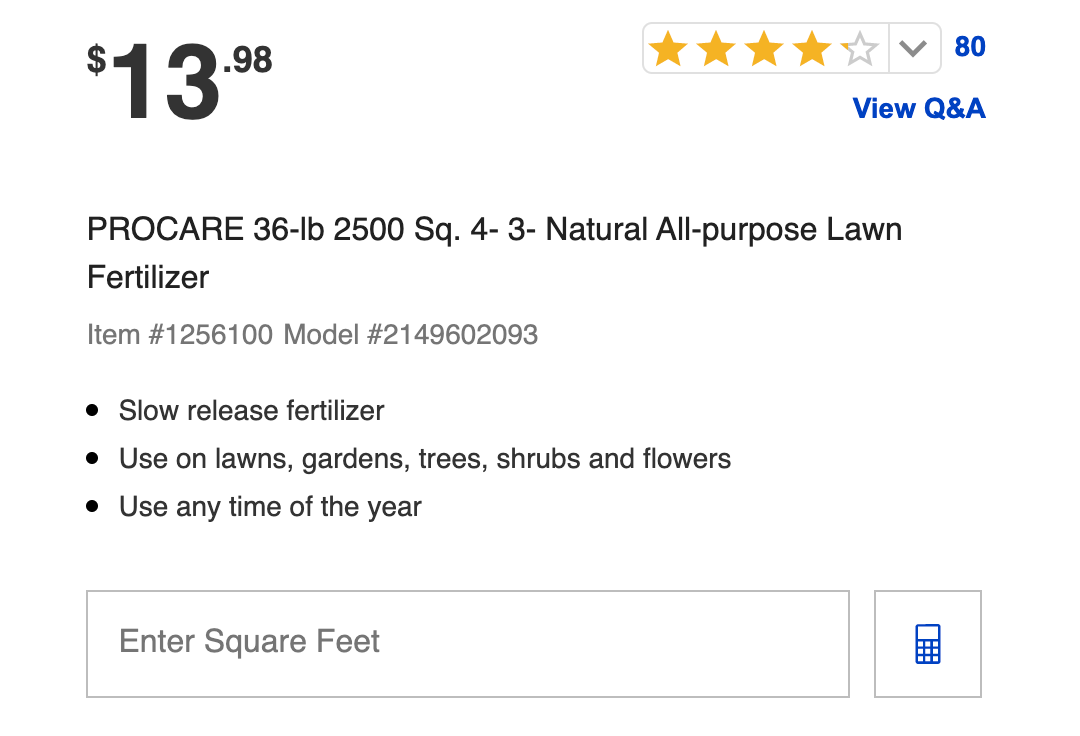
Cost: $14
Coverage: 2,500 sq ft
Cost per 1,000: $5.60
Cost for a 5,000 sq ft lawn: $28 (2 bags)
Flagship 24-0-6
Cost: $55 (includes delivery)
Coverage: 15,000 sq ft
Cost per 1,000: $3.67
Cost for 5,000 sq ft lawn: $18.35 (still have enough left for two more apps)
Here are the basics in summary:
“Nitrogen Drives The Bus”
24-0-6 Flagship
Cost: $55
Bag Weight: 45 lbs
Coverage: 15,000 sq ft
Application Rate: 3 lbs/1,000 sq ft
Cost per 1,000 sq ft: $3.67
Cost for 5,000 sq ft Lawn: $18.35
Pounds on the Ground - Nitrogen : .72 lbs/1,000
ProCare 4-3-0
Cost: $14
Bag Weight: 45 lbs
Coverage: 2,500 sq ft
Cost per 1,000: $5.60
Cost for a 5,000 sq ft lawn: $28 (2 bags)
Pounds on the Ground - Nitrogen : .58 lbs/1,000
